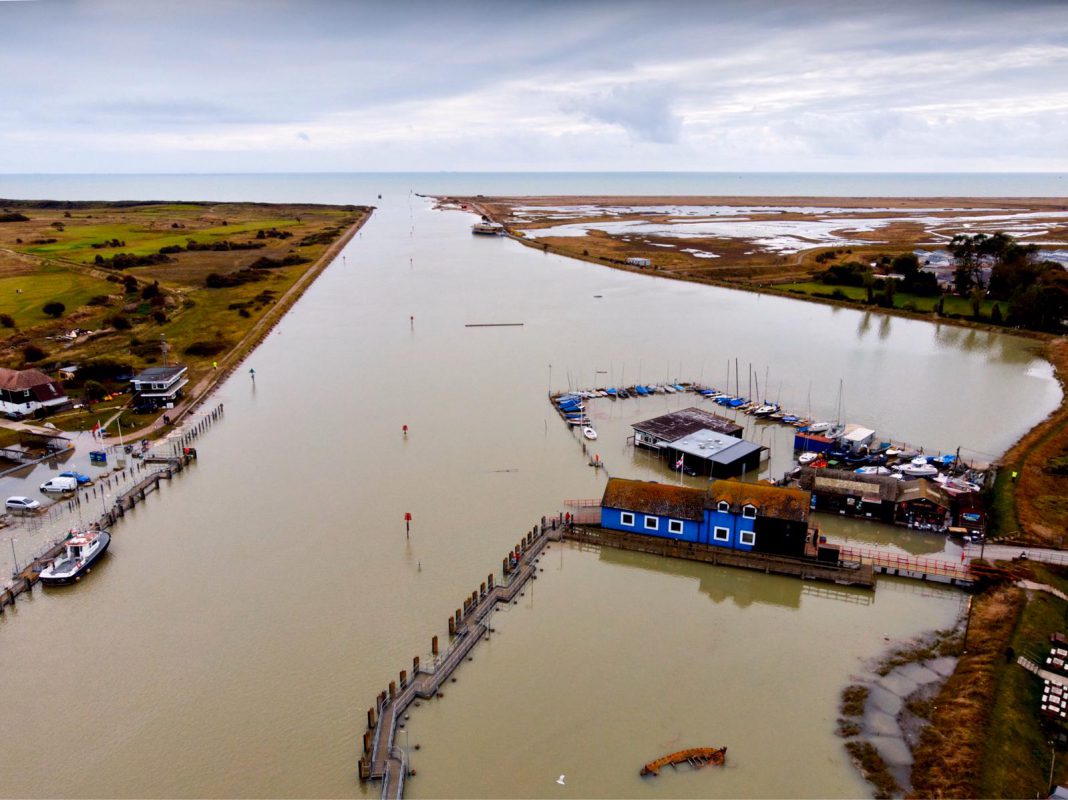In the second of three articles about “Climate changes impact on Rye” Anthony Kimber looks at what is happening locally after reporting previously on international action.
Anthony chairs the local community resilience team (REACT) and is an independent member of SRFCC (see below) which sets priorities for dealing with flood and coastal risks across the South East of England.
The photo above shows how an Environment Agency scheme allows the highest tides currently predicted to spill over into, and flood, the Nature Reserve in order to protect the town. He now reports further on local action.
In the UK, around 230 local councils have declared a climate emergency. Rother District Council declared its own emergency in September 2019, with councillors pledging to become carbon neutral by 2030. The lead councillor said “the government has a target of becoming carbon neutral by 2050, and we believe that we should aspire to being carbon neutral by 2030. We have been told we have 11 years before the damage to the climate of this planet is irreversible.
“But we can’t do this on our own. We must involve the community, we must take them with us, and not do it to them. I’m hoping that in the new year we can have a conference in Bexhill to talk to people, get their ideas and in particular speak with young people. It is after all their futures.” And we will see what comes in early 2020.
What else is happening at our local level? I have reported on a recent fact finding visit to Rye by Dr Martin Hurst, the chair of the Southern Region Flood and Coastal Committee (SRFCC) of which the author is a member. This prompted a review of Rye’s local flood risks in the context of climate change which is forecast to see sea level rise by over one metre by 2100.
I have underscored that our work on the committee takes account of this in its priority setting for flood defence projects across the south and Dr Hurst was particularly interested to see Rye because it experiences all forms of flood risk including extreme rainfall causing high ground water, surface water flooding, and combined sewerage and water run off overloads causing spillage.
Extreme weather events also contribute to the sort of tidal surge that hit the east coast badly in December 2013, with its effects felt as far south as Rye. The event did show that when the flood defence system works, even under surge conditions, the risk to Rye, with present sea levels, is managed – but if any part of the infrastructure fails then the situation can worsen rapidly, with homes and businesses threatened.
[Editor’s note: Rye News has reported that in 2013 high tide water levels along the Strand car park defences, and along the flood defences at Rye Harbour around the nature reserve, were much less than a metre – indeed only a few inches – below the top.]
Clearly maintenance and vigilance are vital to ensure continuing effective defences for the 1,200 or so dwellings sited close to current high tide levels. Importantly, future project work, prioritised by the SRFCC, such as the improvements to the eastern Rother tidal wall, must take account of climate change impacts.
The Rye Neighbourhood Plan considered all these flood risks in some detail and provides policy to mitigate risks affecting all future development. As the coordinator of the Rye Neighbourhood Plan, I am proud that the plan is drafted on the basis of sustainability.
In his third article next week Anthony Kimber writes about action we can take as individuals.
Image Credits: Owen Kemp .




The Environment Agency will hold an open event at the former Freda Gardham School on 3 March 2020 from 2pm to 7.30pm, to explain progress with the Eastern Rother Tidal Walls Scheme. This work fits in to the Fairlight to Folkestone flood defence improvements. If you are interested, do go along and ask about the project
I do wonder if Rother has costed its rather rash decision to be carbon neutral by 2030? I suspect not.